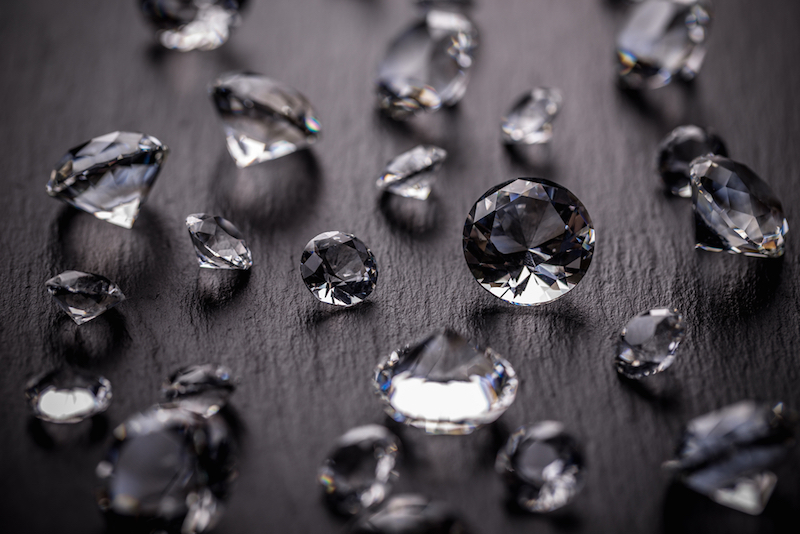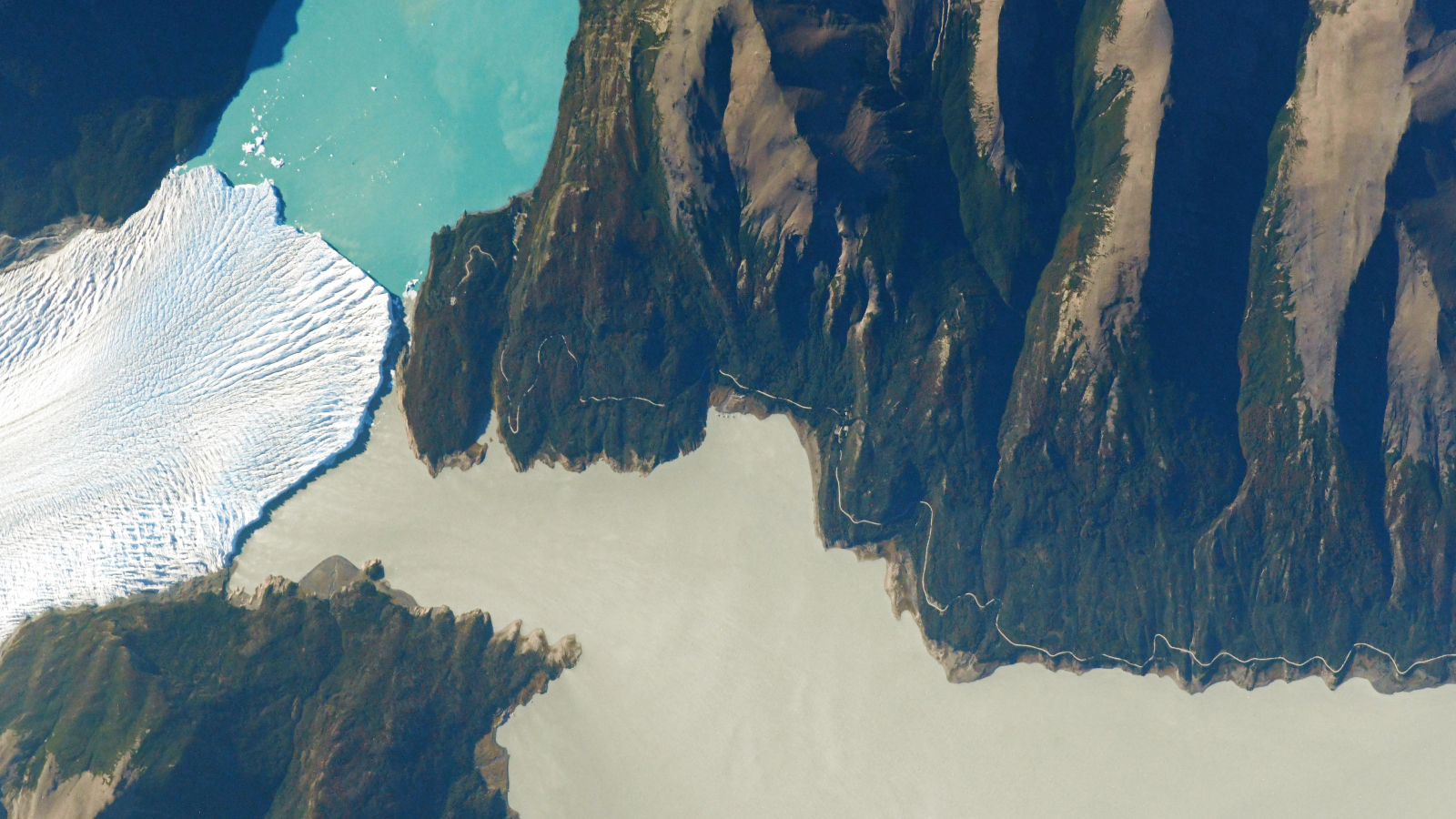
Earth has gotten a number of face-lifts over its 4.4-billion-year history, but in one respect, the planet may look the same way it did when it was young, new research shows.
Primeval diamonds from Witwatersrand, South Africa, contain evidence that early Earth replaced its rocky outer plates with deeper-dwelling mantle rock, said Katie Smart, a geologist at the University of the Witwatersrand and co-author of the new study.
"This means that some sort of recycling mechanism, which we interpret as similar to modern-style plate tectonics, was operating by at least 3.5 billion years ago to move shallow material to the Earth's interior," Smart told Live Science in an email. "This could mean that processes operating on ancient Earth were not so different than those we can observe today." [50 Interesting Facts About the Earth]
Like modern-day Earth, baby Earth may have had its share of volcanoes and earthquakes, Smart added.
Mysterious early Earth
Nowadays, the lighter continental and oceanic crust floats atop a solid but flowing mantle that encircles the planet's molten iron core. Over time, the layers of crust grind against each other, slip past each other and dive beneath each another in a set of interactions known as plate tectonics. Subduction, in which one plate dives beneath another, helps recycle continental crust deep into the mantle and means that hundreds of millions of years ago, some of the material found deep within the mantle was at Earth's surface, feeling the sun's rays.
But few rocks remain from Earth's early history to recreate what the ancient planet looked like, meaning scientists don't agree on when plate tectonics emerged. Some think the plates began their movement 4 billion years ago, while others say the process began just 1 billion years ago.
Get the world’s most fascinating discoveries delivered straight to your inbox.
"Geoscientists know that some continental crust existed very early in Earth's history," Smart told Live Science in an email. "How much crust existed and how did it form are up for debate, but we do know that there was ancient crust present on Earth prior to the time we hypothesize the Wits diamonds formed."
For instance, traces of Earth's primeval crust can be found in rocks in Canada that are more than 4 billion years old, and vast expanses of 3.8-billion-year-old crust still exist at the surface in Greenland. But those pieces of ancient crust only show that continental crust existed, not that Earth's upper layer was being recycled into the mantle at that time, Smart said.
Ancient diamonds
To get a better picture of the teenage Earth, Smart and her colleagues analyzed diamonds found in a rocky outcropping in Witwatersrand, South Africa. The rocks themselves are among the oldest rocks on Earth, and have been at the surface for at least 3.1 billion years, which suggests the diamonds themselves are even older, they said.
Then, the team analyzed the nitrogen isotopes, or versions of nitrogen with different numbers of neutrons, in the diamonds. Diamonds are mostly carbon, and form when the pressure cooker of Earth's interior squeezes carbon atoms into a tight and orderly crystalline pattern. Nitrogen atoms occasionally get squeezed into this diamond crystal structure, and the way these nitrogen atoms clump together can reveal how long the sparkly gemstones spent at the high pressures and temperatures of the subterranean environment before they reached Earth's surface. In this instance, the nitrogen arrangement revealed that the ancient diamonds had spent between 200 million and 400 million years in the mantle before they reached the surface, suggesting they formed at least 3.5 billion years ago, Smart said. [7 Ways the Earth Changes in the Blink of an Eye]
Next, the team took a closer look at the nitrogen atoms themselves. Compared to rocks in the mantle, rocks exposed to air tend to hold more heavy isotopes of nitrogen, which contain more neutrons.
The team found that up to 3 percent of the nitrogen in the diamonds was nitrogen-15 (meaning it contained eight neutrons, rather than the more common seven). That ratio was much higher than the typical fraction in the mantle or other diamonds, but similar to that found in both ancient and modern crust, the researchers reported Jan. 11 in the journal Nature Geoscience.
The nitrogen data showed that sometime prior to 3.5 billion years ago, crust from the surface had somehow made its way down deep into the mantle, where the diamonds formed.
Old rocks, uncertain implications
The new results shed light on processes on ancient Earth, said Sonja Aulbach, a geologist at Goethe University in Frankfurt, Germany, who was not involved in the study. Because diamonds do not react with other elements in the environment, they've long been viewed as potential "time capsules," but it is often too tricky to date them, Aulbach said.
But these diamonds were trapped within rocks whose age is clearly constrained, so "there is no doubt these stones are very old and that whatever secret they give away bears on processes on Earth that occurred at least 3 billion years ago, Aulbach told Live Science in an email.
The new report also did an excellent job of teasing out "every last bit of information" from the elements and isotopes in the diamonds, Aulbach said.
But while the results clearly show that the crust was recycled somehow during the Earth's early years, plate tectonics aren't the only possible explanation, she said.
"Earth's mantle was much warmer in the Archean [eon that began approximately 4 billion years ago], and there must have been a temperature threshold, above which tectonic processes would have been very different," Aulbach said. "There are alternative dynamic scenarios to recycle surface material — for example, by dripping or sagging rather than true subduction."
Still, plate tectonics is the most straightforward explanation, and other evidence from around the world supports the notion that plate tectonics emerged at least 3 billion years ago, she added.
Follow Tia Ghose on Twitterand Google+. Follow Live Science @livescience, Facebook & Google+. Original article on Live Science.

Tia is the editor-in-chief (premium) and was formerly managing editor and senior writer for Live Science. Her work has appeared in Scientific American, Wired.com, Science News and other outlets. She holds a master's degree in bioengineering from the University of Washington, a graduate certificate in science writing from UC Santa Cruz and a bachelor's degree in mechanical engineering from the University of Texas at Austin. Tia was part of a team at the Milwaukee Journal Sentinel that published the Empty Cradles series on preterm births, which won multiple awards, including the 2012 Casey Medal for Meritorious Journalism.


